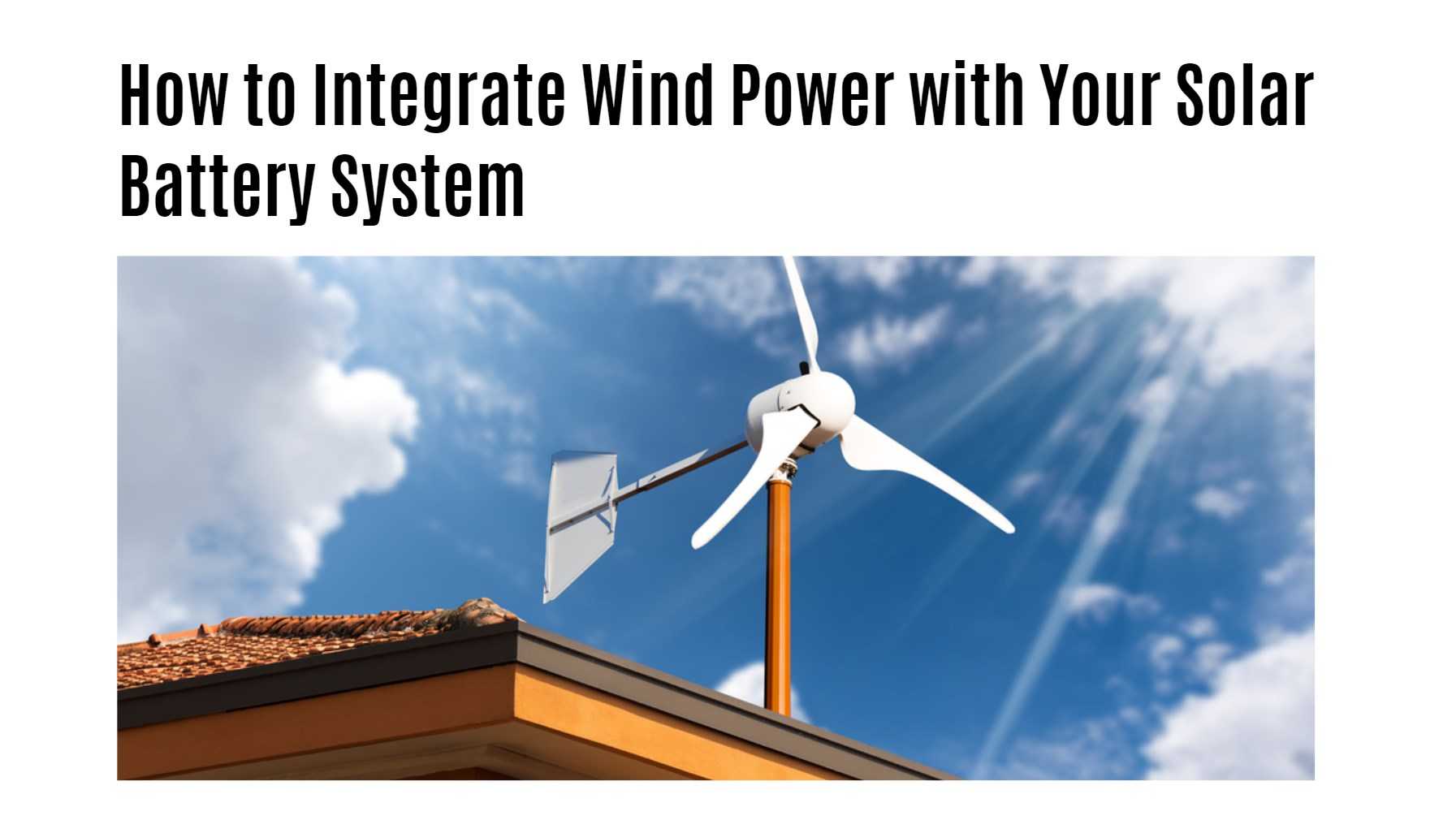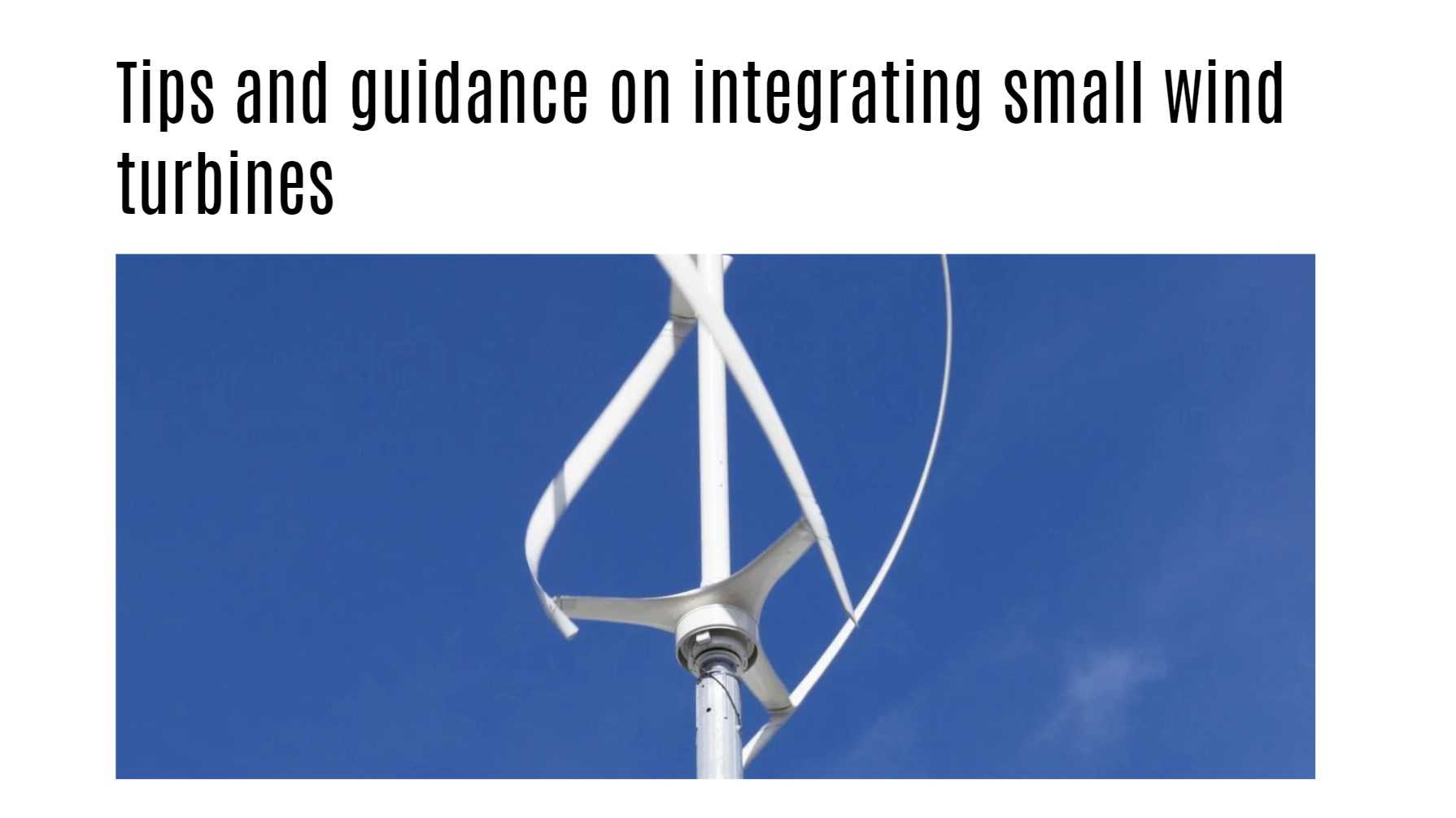For homeowners and businesses seeking to bolster their energy resilience and reduce dependence on traditional power sources, the combination of solar and battery systems has proven to be a successful solution. However, as we strive for a more sustainable future, adding wind power to an existing solar + battery setup can further optimize energy production. In this article, we will provide useful tips and guidance on integrating small wind turbines into your existing system, empowering you to harness the full potential of renewable energy.
Tips and guidance on integrating small wind turbines
- Assess Your Energy Needs:
Begin by understanding your energy consumption patterns and requirements. Analyze your energy usage during different times of the day and throughout the year. This assessment will help you identify periods of low sunlight and determine if wind power can effectively supplement your solar energy during these times.
- Evaluate Wind Resources:
Conduct a wind resource assessment for your location. Research historical wind data or employ local wind maps to estimate the average wind speed and consistency in your area. A reliable wind resource evaluation is crucial in gauging the economic viability and potential energy production of small wind turbines.
- Check System Compatibility:
Before integrating wind power, ensure your current solar + battery system is compatible with the addition of wind turbines. Consult with the manufacturer or installer to verify if any adjustments or upgrades are needed for seamless integration. Maintaining harmonious communication between all components is essential to achieve efficient energy storage and distribution.
- Choose the Right Wind Turbines:
Selecting suitable small wind turbines is critical to maximizing energy production. Consider factors such as the turbine’s rated capacity, cut-in wind speed, and rated wind speed. Opt for reputable manufacturers with a proven track record in small wind turbine technology. Appropriately sized turbines will yield optimal energy output while minimizing upfront costs and payback periods.
- Investigate Permitting and Regulations:
Before installation, research local zoning regulations and permitting requirements for small wind energy systems. Some regions have height restrictions, setback regulations, or noise limitations that could impact your project. Obtain all necessary permits and approvals to ensure a smooth and compliant installation process.
- Conduct a Financial Analysis:
Evaluate the economic feasibility of integrating wind power. Calculate expected energy savings, potential tax incentives, and available financing options. Determine the payback period and return on investment to assess the long-term financial benefits.
- Seek Professional Installation and Maintenance:
For safe and efficient operation, hire a certified installer who is experienced in small wind systems. Proper installation is critical to the performance and longevity of your wind turbine. Regular maintenance will optimize its output and extend its service life.
Conclusion:
Integrating wind energy into existing solar+battery systems is a powerful step toward energy independence and sustainability. You can successfully integrate a small wind turbine into your setup by assessing your energy needs, wind resources, ensuring system compatibility, selecting the right wind turbine, understanding local regulations, conducting a financial analysis, and seeking professional installation and maintenance .
With this integration, you not only increase energy resiliency during periods of low sunlight, but you also contribute to a greener, more environmentally friendly future. Employ renewable energy solutions and experience the transformative potential of combining solar and wind energy to create a better tomorrow.
Related Posts
- What Kind of Inverter Does My Solar Panel System Need?
- Using Solar Panels without Batteries: A Practical Guide
- Understanding the Elevation Angle in Solar Energy: Key Concepts and Applications
- Understanding How Solar Lights Function at Night: A Guide for Energy Professionals
- Understanding BMS and its Integration with Solar Inverters
- Troubleshooting Guide: Why Isn’t My Ring Solar Panel Charging?






























